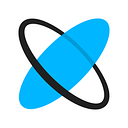Healthcare mobile app development in 2023: Benefits, types, and trends
Over the past years, given various influential factors, the global telemedicine market has been rapidly growing. With omnipresent chronic and contagious diseases, lacking quality medical services, in particular in unstable, low-income regions, and digitization gaining momentum across industries, remote consultation and treatment is becoming increasingly popular among both healthcare professionals and patients.
Given today’s computational technology, telemedicine solutions provide numerous additional opportunities. End-to-end automation, computer intelligence, and wearables enable efficient remote communication, appointment and patient management, instant monitoring, accurate diagnosis and treatment.
Healthcare industry fueled by IT services
As reported by Markets and Markets, the healthcare IT market was estimated to reach $394.6 billion in 2022. The main growth drivers are adoption of e-prescriptions, telehealth, telemedicine, and other HCIT solutions.
As stated by Precedence, the health IT market is estimated to hit $857.5 billion by 2030, with a 13.1% CAGR. The main growth factors are adoption of modern cloud solutions, the demand for telehealth and telemedicine, regulatory changes, rapidly increasing elderly population and overspreading chronic diseases.
As found by Statista:
- The number of global smartphone users will reach 6.8 billion in 2023, and exceed 7.6 billion in 2027
- With global smartphone usage rising continuously, 59,16% of internet traffic in 2022 was mobile
Speaking about telemedicine trends:
- 37% of adults surveyed in the United States have used telemedicine applications in 2021
- Most surveyed in the United States prefer using telemedicine apps highlighting convenience, accelerated accessibility, and speed
Healthcare mobile app development: Core benefits
Increased accessibility
Telemedicine applications eliminate numerous widespread problems associated with healthcare accessibility. Providing various on-demand features — voice and video calls, smart chatbots, media attachments, and more — modern solutions assist people struggling with mental and physical disabilities, having busy work schedules, and people from disadvantaged, low-income countries.
Remote services might comprise:
- Patient registration and counseling
- Disease monitoring
- Diagnosis determination
- Treatment prescription
Streamlined monitoring
Telemedicine applications, if integrated with personal medical devices, notably optimize health monitoring. Having faced considerable difficulties in times of the coronavirus pandemic, more and more professionals handle routines without making in-person appointments.
Besides obtaining general information, remote observation might help efficiently track:
- Heart rate
- Blood pressure
- Sugar levels
- Oxygen levels
Here are striking examples of technology streamlining monitoring:
- User-friendly application with connection to personal medical devices
- Cross-platform application for easy tracking, investigation & reporting
Greater adherence
A challenge worth mentioning is improper medication adherence by patients dealing with chronic conditions. Custom-designed solutions might comprise useful recommendations, refill reminders, intake notifications, treatment plans, and more.
Facilitated communication and management
A roadblock to mention is troublesome, inefficient communication and management within organizations. Modern solutions might include medical records, appointment history, instant messaging between clinicians, and notifications about admissions, improving day-to-day operational processes.
Popular types of mobile healthcare applications
Healthy living
These applications allow adopting and maintaining healthy lifestyles without making needless appointments.
Using personalized health applications, patients might:
- Track metrics (sleep, medication, diet, exercise)
- Access personal patient history
- Receive notifications
- Directly communicate with professionals
Remote monitoring
Such software helps provide medical services without putting involved parties at risk.
Using specialized healthcare solutions, clinicians can:
- Eliminate repeated manual routines associated with data digitization
- Eliminate potential health risks associated with contagious diseases
Business productivity
Given today’s computational advances, there are numerous opportunities to streamline healthcare services. With custom ERP and CRM platforms, EMR and EHR systems, and other assessment/management solutions, responsible decision-makers can boost business productivity and revenue.
Data-driven decision-making
Healthcare and pharmaceutical companies might also notably benefit from implementing artificial intelligence. By leveraging data processing and generalization, anomaly and pattern detection, text and image recognition, and other advanced capabilities, strategic-thinking leaders access valuable business insights.
Rising trends in mobile healthcare development
Big data
Big data radically changes information gathering, processing, analysis, and management across industries. More specifically, this technology helps obtain critical insights to power business productivity.
Main advantages:
- Predictive analytics
- Strategic planning
- Enhanced imaging
- Enhanced security
- Personnel management
- Risk management
Cloud computing
Cloud computing is the on-demand availability of resources, including storage, servers, networks, and software. This technology provides for unlimited resources, accelerated innovation, and cost-efficiency.
Main advantages:
- Data storage and security
- Efficient record-keeping
- Increased flexibility and scalability
- Cloud connected medical devices
Augmented reality
If implemented by professionals, augmented reality might provide numerous opportunities for clinicians. Among many other things, this technology might help handle breastfeeding, describe symptoms, and more.
Practical application:
- Robotic-assisted surgery
- Medical imaging
- Physical therapy and rehabilitation
- Personnel training
Blockchain technology
If handled by the right team, blockchain technology can transform medical services for physicians and patients. Coming with multiple benefits, this technology prioritizes security and confidentiality.
Practical application:
- Data management
- Credential verification
- Medical insurance
- Secure transactions
Summing up
In the last years, mobile development has become increasingly popular across industries, including healthcare. With easy-to-navigate, appealing interfaces and comprehensive, on-demand functionality, mobile applications help improve medical services.
Incorporating today’s emerging innovations, mobile design and development is radically changing healthcare. By leveraging end-to-end automation, computer intelligence, and other modern advances, mobile solutions reduce time and cost, increase productivity, and boost business profitability.
